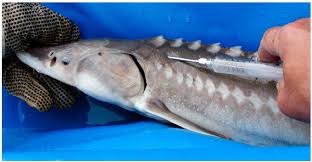Introduction
Passive Integrated Transponder (PIT) tagging is a widely used method for tracking and studying wildlife. This technology provides invaluable data on animal behavior, migration patterns, and population dynamics, aiding conservation efforts. However, like any research involving live animals, PIT tagging comes with ethical considerations that researchers must address to ensure humane and responsible scientific practices.
This article explores the key ethical principles researchers should follow when using these tagging for animal studies, aligning with the best practices in animal welfare and scientific integrity.
Understanding PIT Tagging in Animal Research
These tagging involves implanting a small, biocompatible microchip into an animal, usually beneath the skin or within body cavities. This microchip, when scanned, transmits a unique identification code, allowing researchers to track individual animals over time without requiring physical recapture.
Benefits
- Non-intrusive Long-Term Monitoring: Unlike traditional tracking methods, PIT tags remain functional for an animal’s lifetime without requiring batteries.
- Accurate Data Collection: Provides precise identification and tracking of species.
- Enhanced Conservation Efforts: Helps monitor endangered species and assess the effectiveness of conservation programs.
Despite these benefits, researchers must uphold ethical standards to ensure the well-being of the animals they study.
Key Ethical Considerations for PIT Tagging
1. Minimizing Harm and Stress to Animals
The primary ethical concern in tagging is minimizing distress and potential harm to the animals. Researchers should:
- Use proper sterilization procedures to prevent infections.
- Select appropriate tag sizes to avoid unnecessary discomfort.
- Ensure trained personnel perform the implantation to reduce pain and stress.
According to a 2021 study published in Wildlife Research, proper PIT tag application techniques can reduce post-procedural stress and improve survival rates among tagged animals (Smith et al., 2021).
2. Ensuring Animal Welfare Compliance
Researchers must comply with established animal welfare regulations, such as:
- The Animal Welfare Act (AWA) in the U.S.
- European Union Directive 2010/63/EU on animal research
- Guidelines from the International Union for Conservation of Nature (IUCN)
These regulations emphasize humane treatment, requiring approval from an Institutional Animal Care and Use Committee (IACUC) or equivalent ethical review board before conducting tagging studies.
3. Selecting the Right Species and Sample Size
- Avoid over-tagging vulnerable species that may already face population pressures.
- Conduct pilot studies to determine the appropriate sample size, ensuring statistical significance while limiting unnecessary tagging.
- Consider species-specific physiological responses to tagging to minimize potential adverse effects.
4. Using Appropriate Anesthesia and Post-Tagging Monitoring
While PIT tagging is minimally invasive, using local anesthesia can reduce pain and stress during implantation. Moreover, monitoring tagged animals for signs of infection, tag rejection, or behavioral changes is critical to ensuring their well-being.
5. Data Privacy and Ethical Use of Tracking Information
With the rise of digital tracking technologies, researchers must ensure that data collected through tagging is used ethically. Key considerations include:
- Protecting location data to prevent illegal poaching activities.
- Sharing data responsibly, especially when working with endangered species.
- Obtaining appropriate permissions when conducting research in protected areas or indigenous territories.
6. Transparent Reporting and Ethical Research Practices
Ethical animal research requires full transparency in study design, methodology, and findings. Researchers should:
- Publish data openly while adhering to ethical reporting standards.
- Disclose potential conflicts of interest.
- Follow the ARRIVE (Animal Research: Reporting of In Vivo Experiments) guidelines to ensure high-quality, reproducible research.
7. Balancing Scientific Gains with Ethical Responsibility
While these tagging offers immense benefits for ecological research, the practice must balance scientific objectives with the responsibility to avoid unnecessary harm to animals. Researchers should always assess whether tagging is essential or if alternative, non-invasive methods (e.g., camera trapping, acoustic monitoring) can yield similar results.
Case Studies: Ethical Challenges and Best Practices
Case Study 1: Sea Turtle Conservation Efforts
In a study conducted by the University of Queensland, this tagging was used to track endangered sea turtles. Ethical guidelines were followed by ensuring minimal handling, using veterinary-grade biocompatible tags, and engaging local conservationists in the monitoring process. The results provided critical insights into nesting habits while maintaining ethical integrity.
Case Study 2: Small Mammal Studies in Urban Areas
A research team studying rodent populations in an urban ecosystem implemented tagging but faced criticism for high mortality rates among tagged individuals. After an ethics review, the study revised its procedures, incorporating post-tagging monitoring and anesthesia, significantly improving animal welfare outcomes.
Frequently Asked Questions (FAQs)
1. Is tagging painful for animals?
These tagging is considered minimally invasive, but proper anesthesia and post-tagging care help reduce discomfort.
2. How long do PIT tags last?
PIT tags typically last for the animal’s lifetime, making them ideal for long-term studies.
3. Are there alternatives to tagging?
Yes, alternative methods include radio telemetry, GPS tracking, and camera traps, depending on the research objective.
4. What are the risks of tagging?
Potential risks include infection, tag rejection, or behavioral changes, which can be minimized through ethical tagging procedures.
5. How do researchers ensure ethical tagging?
By following welfare guidelines, using trained personnel, minimizing harm, and obtaining ethical approvals before conducting studies.
Conclusion
PIT tagging is a powerful tool for wildlife research and conservation, but it must be conducted ethically to uphold animal welfare standards. Researchers should prioritize minimizing harm, complying with ethical regulations, and transparently reporting their findings. By following best practices, the scientific community can ensure that PIT tagging contributes to meaningful conservation efforts without compromising the well-being of the animals involved.










